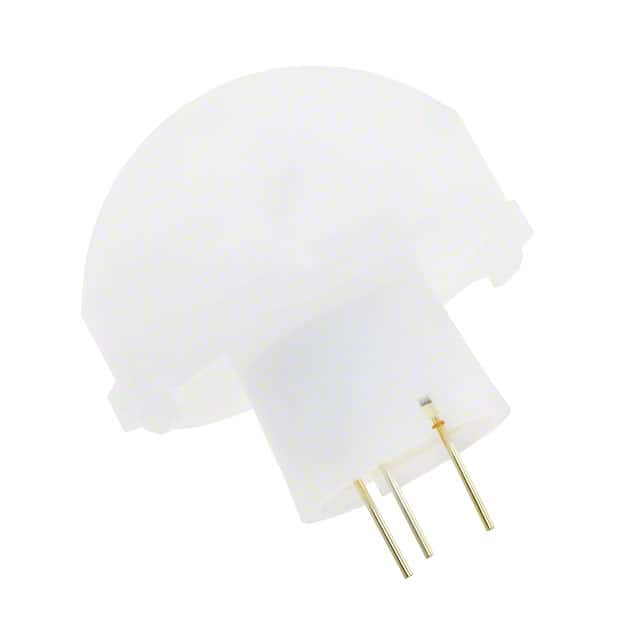EKMB1103113
Product Overview
- Category: Sensor Module
- Use: Motion detection and presence sensing
- Characteristics: High sensitivity, low power consumption
- Package: Compact module with integrated sensor components
- Essence: Detects motion and presence in its vicinity
- Packaging/Quantity: Typically sold as individual units
Specifications
- Operating Voltage: 3.3V - 5V
- Output Type: Digital (TTL)
- Detection Range: Adjustable, typically up to 5 meters
- Dimensions: Small form factor, approximately 20mm x 20mm
Detailed Pin Configuration
- VCC: Power supply input
- GND: Ground connection
- OUT: Digital output signal indicating motion detection
Functional Features
- Motion Detection: Detects movement within its range
- Presence Sensing: Identifies the presence of an object or person
- Adjustable Sensitivity: Allows for customization based on application requirements
Advantages
- High Sensitivity: Able to detect subtle movements
- Low Power Consumption: Energy-efficient operation
- Compact Design: Easy to integrate into various applications
Disadvantages
- Limited Range: Effective up to a certain distance
- Environmental Interference: Susceptible to environmental factors such as temperature and humidity
Working Principles
The EKMB1103113 operates based on passive infrared (PIR) technology, which detects changes in infrared radiation within its field of view. When motion or presence is detected, the sensor outputs a digital signal indicating the event.
Detailed Application Field Plans
- Security Systems: Motion detection for intruder alarms
- Lighting Control: Triggering lights based on occupancy
- Energy Management: Activating devices based on human presence
Detailed and Complete Alternative Models
- EKMB1103114
- Similar functionality with enhanced range
- EKMB1103112
- Lower sensitivity but wider detection angle
This comprehensive entry provides a detailed understanding of the EKMB1103113 sensor module, including its specifications, features, advantages, disadvantages, working principles, application field plans, and alternative models.
10个与EKMB1103113在技术解决方案中的应用相关的常见问题及解答
What is EKMB1103113?
- EKMB1103113 is a passive infrared (PIR) sensor module commonly used for motion detection in various technical solutions.
How does EKMB1103113 work?
- EKMB1103113 detects changes in infrared radiation emitted by or reflected from objects in its field of view, and triggers an output signal when motion is detected.
What are the typical applications of EKMB1103113?
- EKMB1103113 is commonly used in security systems, automatic lighting controls, occupancy sensing, and energy management solutions.
What is the operating voltage range of EKMB1103113?
- EKMB1103113 typically operates within a voltage range of 4.5V to 20V DC.
What is the detection range of EKMB1103113?
- The detection range of EKMB1103113 can vary based on the specific model, but it is typically around 5 meters with a 110-degree field of view.
Can EKMB1103113 be used outdoors?
- EKMB1103113 is designed for indoor use, but there are weatherproof enclosures available that allow its use in outdoor applications.
Does EKMB1103113 have adjustable sensitivity?
- Yes, EKMB1103113 often has adjustable sensitivity settings to customize its response to motion.
Is EKMB1103113 compatible with microcontrollers?
- Yes, EKMB1103113 can be easily interfaced with microcontrollers such as Arduino, Raspberry Pi, and other similar platforms.
What is the power consumption of EKMB1103113?
- The power consumption of EKMB1103113 is relatively low, typically ranging from 50-100 microamps in standby mode and around 1-2 mA when active.
Are there any special considerations for installing EKMB1103113?
- It's important to mount EKMB1103113 securely to minimize false triggers, avoid direct sunlight exposure, and ensure proper wiring and voltage supply for reliable operation.


